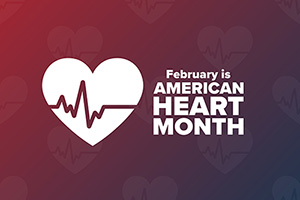Each year we make a big to-do about American Heart Month. We’re reminded to eat well, exercise, get our cholesterol and blood pressure checked, and see if we suffer from blood sugar problems.
And yet, trends are concerning. We’re making progress in preventing heart attacks, and we’re keeping people with heart disease alive longer through advanced techniques. Smoking rates are down dramatically. You’d think we’d be doing better.
But in actuality, over the past few years, Americans are now experiencing diminished life expectancy, reversing a decades-long trend toward increasing longevity. We now lag far behind other advanced countries, and the gap is widening.
We spend way more per capita on medical care than other countries—we’re simply not getting enough bang for our buck. We perform over two million heart stenting procedures per year to unblock arteries with a tiny metal scaffold, and a quarter of a million bypass surgeries.
But stents are vastly over-performed, according to many analyses. Helpful in “acute coronary syndromes” when not enough blood is reaching the heart (as during a heart attack), PCI, as it’s referred to, can be lifesaving. But in patients with stable coronary disease, even with known blockages, medical management delivers equivalent outcomes. Despite research reinforcing this, about 75% of stents placed in US hospitals from 2015-2017 were for stable heart disease. Reducing unnecessary stents could save us as much as six billion dollars in health care costs annually. But defensive medicine, enthusiasm for new technology, and a profit-driven health care system perpetuate this over-reach.
And a recent UK study showed that stents—often done to address heart failure—confer no benefit whatsoever. 60,000 excess procedures are done unnecessarily on heart failure patients in Britain alone.
To compound harm and waste, we’re playing cholesterol-limbo (“How low can you go?”) with escalating calls for “intensive lipid-lowering;” LDL cholesterol targets have become ever more aggressive. Less than 130 used to suffice; now powerful new PCSK-9 drugs have enabled goalposts to be moved to LDL 30 or less!
But in a near-sighted focus on cardiovascular prevention, we’re missing a key objective: extending life. While some modest gains have been achieved in reducing heart attacks and strokes with statins and even more powerful cholesterol drugs, studies keep reminding us that they don’t forestall death:
“Our findings indicate that all-cause and CV mortality reduction was not related to LDL-C relative or absolute reduction (RR and ARD) or to baseline and achieved LDL-C levels . . . risk of all-cause mortality did not increase substantially between LDL-C categories under 100 mg/dL, 100 to 129 mg/dL, 130 to 159 mg/dL, 160 to 189 mg/dL, and ≥190 mg/dL.”
The fact remains that one in ten patients had a second vascular event within three years follow up, despite attaining LDL-C to less than 70 mg/dL with powerful new PCSK-9 meds.
“Statins lower cholesterol, but not necessarily heart attack risk, study finds”, reports UPI. The article reviews new research that suggests that, for people who do not modify their lifestyle—quit smoking, reduce weight, eat healthy diets, or embark on exercise programs—the benefits of drugs may be marginal.
Nevertheless, in full capitulation to the flawed Cholesterol Hypothesis, Britain’s National Health Service has recommended that anyone over the age of 18 who wants to take a statin should be offered one!
Given that there’s a place for cholesterol meds in patients with established heart disease or serious heart risks (secondary prevention), there’s still considerable doubt about the efficacy of primary prevention in otherwise healthy individuals. It’s been estimated that treating 100 adults over 55 years of age without known CV disease with a statin for 2.5 years prevented 1 CV event in 1 adult—but without mortality benefit. That’s 99 who take the medication with no benefits and considerable expense, not to mention risk of side effects.
And while we’re at it, in 2023 why doesn’t insurance cover the cost ($150-300) of heart scans? They’re the best way to determine who should be the target of preventive efforts, identifying the true potential beneficiaries of cholesterol drugs. The chance of someone with a zero calcium score getting a heart attack is minuscule.
Another specter haunts the heart landscape this February: Covid. Undoubtedly, having had Covid increases one’s heart risk—it’s not just a respiratory disease, it has vascular aftermaths. A study in The Medical Journal of Virology shows that heart deaths have spiked in the wake of Covid. But most concerning are the demographics of the surge:
“The excess death, defined as the difference between the observed and the predicted mortality rates, was most pronounced for the youngest (25–44 years) aged decedents, ranging from 23% to 34% for the youngest compared to 13%–18% for the oldest age groups.”
Some of this undoubtedly can be attributed to natural infections; some to delayed or disrupted medical care during the lockdowns. But surely, these grim stats raise the important question of whether the novel mRNA vaccines, with their propensity to cause heart inflammation in young males and strokes in the elderly, are contributing to a puzzling uptick in cardiovascular deaths. Responsible voices are raising the alarm, while health authorities and the government are hewing to recommendations that everyone, regardless of age or health status, get a booster.
You won’t hear that theme aired during this year’s Heart Month.
A possible solution comes from the Council of Responsible Nutrition’s recent health care cost savings report, “Supplement to Savings”. It projected annual net cost savings—for cardiovascular disease alone—of up to 17.74 billion dollars if a few key nutritional supplements were deployed for at-risk individuals. Among them:
- Vitamin K2: $9.48 billion
- Omega 3 fatty acids: $4.47 billion
- Magnesium: $2.32 billion
- Soluble fiber: $1.47 billion
And those are merely a few of the many with potential benefits—think CoQ10, garlic, l-carnitine, etc.
Nevertheless, a new survey shows that most cardiologists receive scant nutrition training.
“Ninety percent reported receiving no or minimal nutrition education during cardiovascular fellowship training, 59 percent reported no nutrition education during internal medicine training, and 31 percent reported no nutrition education in medical school. Further, nearly two-thirds of cardiologists reported spending just three minutes or less per visit discussing nutrition with patients.”
The fact is, we spend 75% of our healthcare budget on chronic care, and only 3% on prevention. The elephant in the room—if you’ll excuse the pun—is the accelerating prevalence of obesity (not just overweight) in the U.S. It now exceeds 40%.
And it doesn’t help that the American Heart Association continues to endorse Mazola Corn Oil, Cheerios, and “I Can’t Believe It’s Not Butter” as heart-healthy choices!
We can do better.







